Our Tips For Selecting The Right Paint For Any Surface
Painting the interior or the exterior of your home is an easy way to express your personal style while elevating your home’s overall appearance and increasing its value. But there’s more to choosing the right paint than simply picking a pretty color.
First, you must determine which type of paint is best for each surface that you will be painting. Next, do some research about the many different paint finishes, their varying levels of durability, and how they can transform the look of the paint. For instance, a lower-luster eggshell finish is suitable for walls and ceilings, but doors and trim may look better with a higher-sheen paint. Then, learn about how to properly test different colors and prepare surfaces for painting.
Before you embark on a time-consuming and expensive painting project, read our tips and information on choosing the perfect type, finish, and color of paint for the inside and outside of your home.
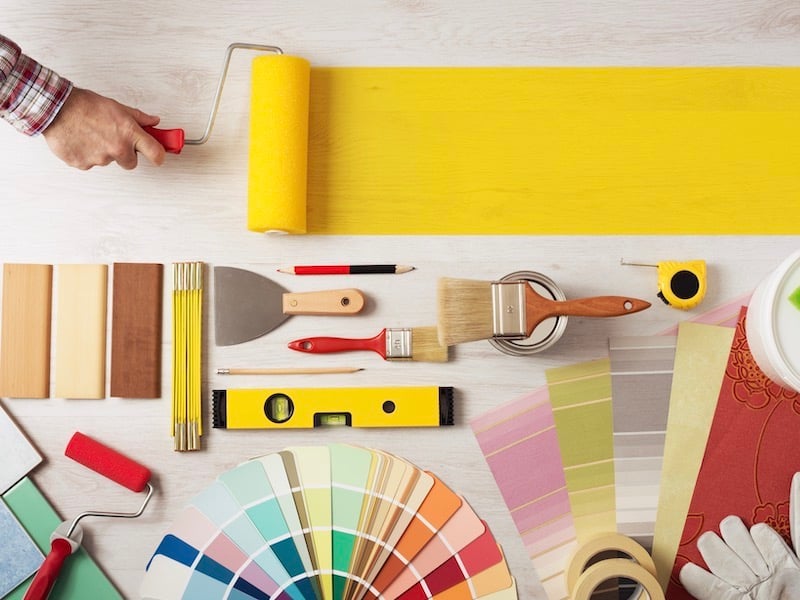
How Paint Is Made
Using a paint made with high-quality ingredients will allow you to cover a surface with fewer coats to achieve the color you want, and that means less work for you. It also means that the paint has a better chance of wearing well over time.
There are various types of paint, but they are all comprised of 4 main components. Altering the levels and concentrations of the components will determine how a paint looks and performs, during and after application.
1. Pigment
The combination of particles that make up the color in paint is called pigment. Quality paints have at least 45% pigment volume concentrate (PVC) which means that more color will be deposited on the surface you are painting.
2. Resin
Resin is the component in paint that binds the ingredients together. It also allows the paint to stick to a surface.
3. Solvent
The thinning agent that makes paint a liquid is known as solvent. Oil-based paints have a mineral turpentine solvent, while water-based or latex paints have a water-based solvent.
4. Additives
Additives are the enhancements that give paint mold or stain resistance and other special properties. Some additives allow paint to dry at an accelerated pace.

The Different Types of Paint
When referring to whether a paint is oil- or water-based, we are actually talking about the type of solvent used in the paint. To clarify, solvent is the liquid component of the paint that evaporates as the paint dries, leaving the color behind.
1. Water-Based Paint
As the name suggests, the solvent used in a water-based paint is almost all water. Also known as latex paint, water-based paint is the most commonly used type of paint for home interiors. It is also more widely used for home exteriors these days because newer formulations are becoming more durable.
In general, water-based paint is easy to use, dries quickly, and has low levels of toxic emissions called volatile organic compounds (VOCs). Water-based paint can be used in a wide variety of applications, is available in many colors and finishes, and is budget-friendly. It’s also simple to clean brushes and other equipment with soap and water after you’ve finished your project. Be aware that water-based paint may not stick to a surface that has previously been coated with an oil-based paint, so a primer must be used in this case.
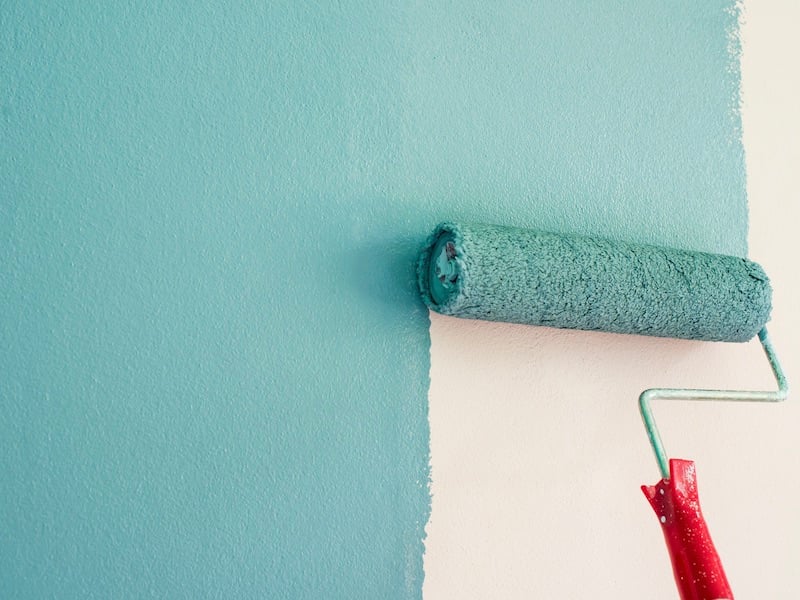
2. Oil-Based Paint
Oil-based paints use a solvent in the makeup of the paint which is typically a mineral turpentine. Oil- based paint offers a higher-level of sheen and a more durable, rich-looking finish than water-based paint. Use an oil-based paint in high-moisture areas like bathrooms, or on surfaces that are subject to heavy use or impact, such as cabinetry, trim, or doors. With this type of paint, brush strokes fill themselves in to create a hard, smooth finish, but it takes longer to dry than water-based paint.
Oil-based paint requires clean-up with turpentine or other paint thinners and can be messy to use. It also has a strong odor and contains higher levels of VOCs than water-based paint, so it’s not environmentally friendly. Be sure to have good ventilation and air flow while you are using oil-based paint in your home.
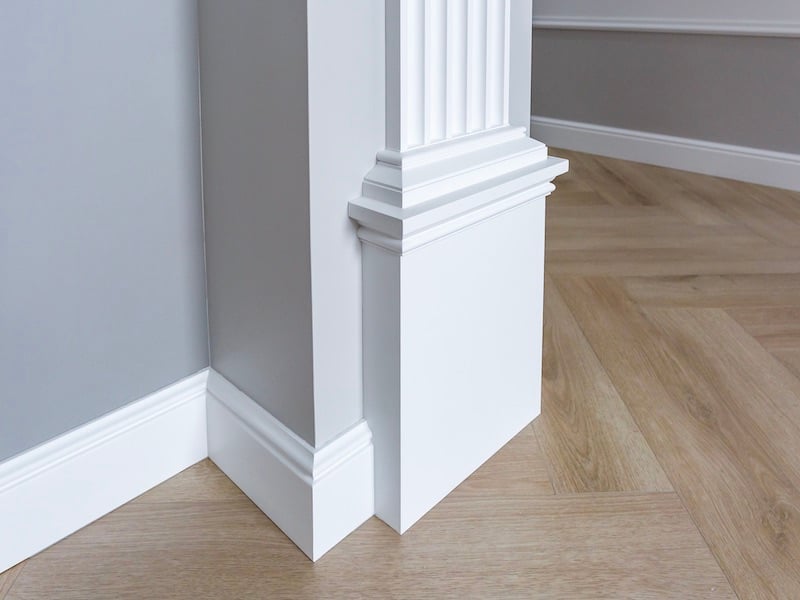
3. Enamel Paint
Traditionally, enamel paints are oil-based but manufacturers have recently developed water-based versions that are safer for the environment and can be easier to use and clean up. All enamel paints are designed to form a hard, glass-like shell when dry, to be highly durable, and to withstand daily wear-and- tear, moisture, and temperature fluctuation. Enamel paint adheres to a wide range of materials from slick to porous, such as glass, steel, porcelain, plastic, ceramic, and wood.
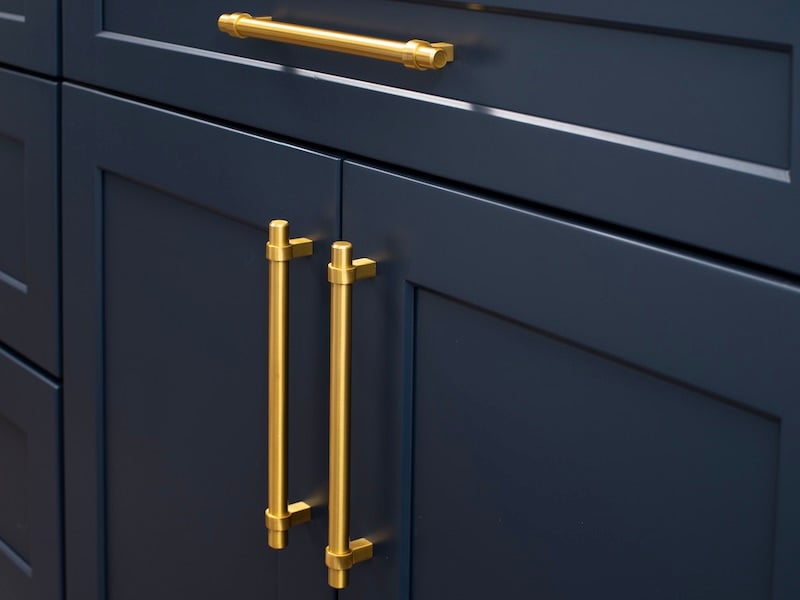
4. Acrylic Paint
Acrylic paint is made from pigment suspended in an acrylic polymer solution and acrylic resin. Its chemical composition gives it elasticity, so it expands and contracts with temperature fluctuation, making it resistant to flaking, cracking, and fading. Its durability makes it a great choice for exterior painting projects or in moisture-prone areas inside the home, but it can be expensive. Acrylic paint requires proper ventilation since it produces high levels of VOCs, and you will need to use paint thinners for clean-up.
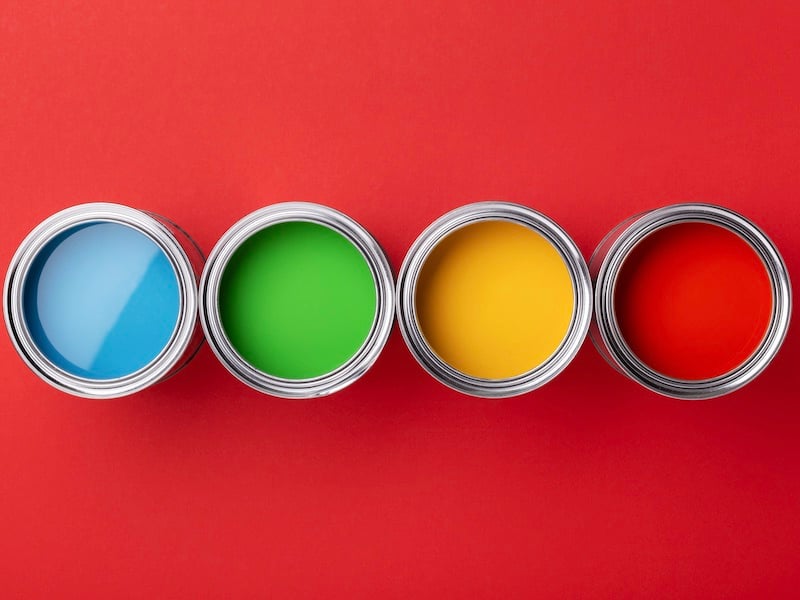
5. Specialty Paint
Some paints are formulated for use on certain surfaces or for a unique purpose. Turn a wall in your home into a fun play station by using chalkboard or magnetic paint. Manufacturers make specialty paints that are designed to adhere to materials found on the exterior of a home, such as metal used for gutters and railings, or wood that is used for decks, siding, and shingles. Other specialty paints are designed for use on brick, concrete, and stucco. These paints can be water-or oil-based and are usually made to withstand exposure to weather.
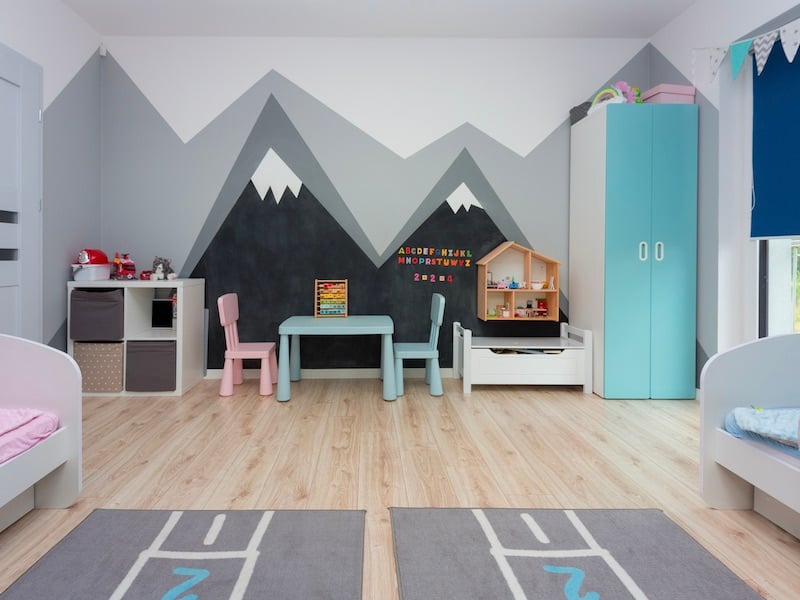
The Different Types Of Paint Finishes
Paint finish, or sheen, is a measure of how much light reflects off a painted surface. Changing the level of sheen can affect how color is perceived and will transform the look of the paint. High-gloss paint has more resin and less pigment, making it more shiny, durable, and easy to clean than lower-sheen paints that have more pigment and less resin.
1. Matte Or Flat Paint Finish
Matte or flat paint has a low sheen and absorbs light, instead of reflecting it. It hides imperfections, has a velvety texture, and provides the most depth of color because it contains a high level of pigment. Flat paint is not very durable or easy to clean, so it is typically used on ceilings and on walls in lower-traffic areas of the home, like bedrooms. It can be used on exterior siding or shingles since it covers surfaces well, masks flaws, and dries quickly, but flat paint can fade and may require more frequent repainting than higher-gloss paints.

2. Eggshell Paint Finish
Eggshell paint has a slight luster but no shine. It is more durable than flat paint but does show imperfections to a moderate degree. Scuffs and other marks are easier to clean from eggshell paint than flat paint, so it’s a great choice for places with low or medium traffic, like living rooms, hallways, and entryways. Eggshell is the most popular finish for exterior walls because it works well on a variety of siding materials, and it offers a more luxurious look and a higher level of durability than flat paint while still hiding some imperfections.
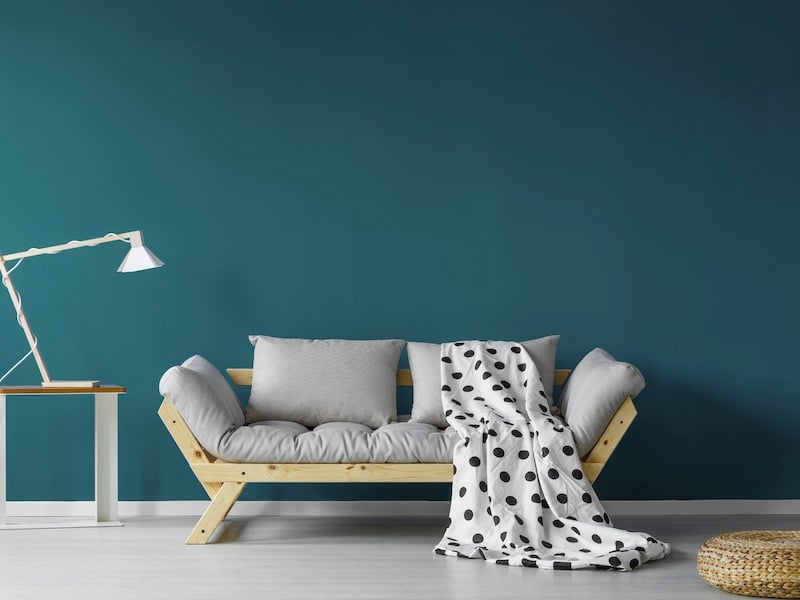
3. Satin Paint Finish
Satin paint has a velvety sheen and is glossier than eggshell paint. It is perfect for high-traffic areas of the home such as kitchens, family rooms, bathrooms, and laundry rooms because it is durable and easy to clean. Satin paint can also be used on the exterior of a home if you want more luster than eggshell paint provides. However, satin paint does show imperfections and brush strokes if not applied to a properly primed and prepared surface.
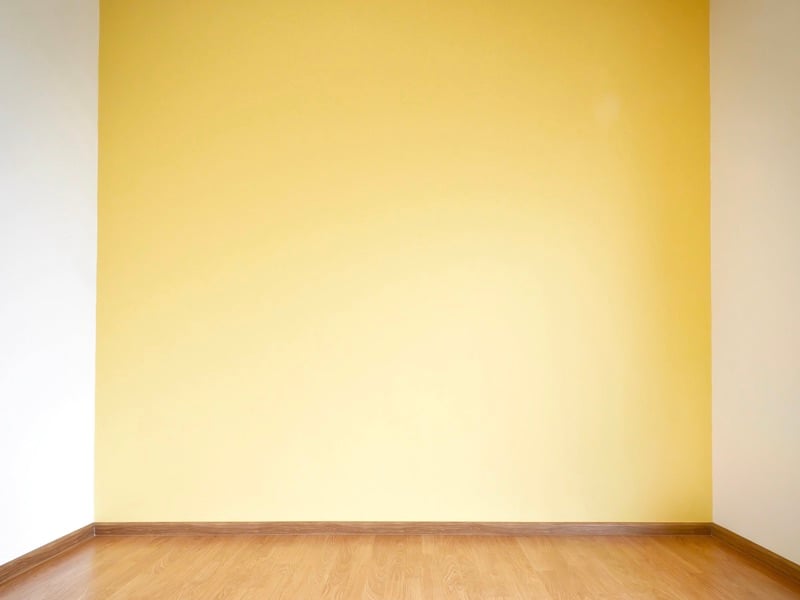
4. Semi-Gloss Paint Finish
Semi-gloss paint has a high sheen, is very durable, and is moisture resistant. It is perfect for cabinets, crown molding, baseboards, interior and exterior doors and trim, or other surfaces that are subject to wear-and- tear or that are exposed to the weather. Semi-gloss paint can be cleaned easily but shows imperfections due to its high sheen.
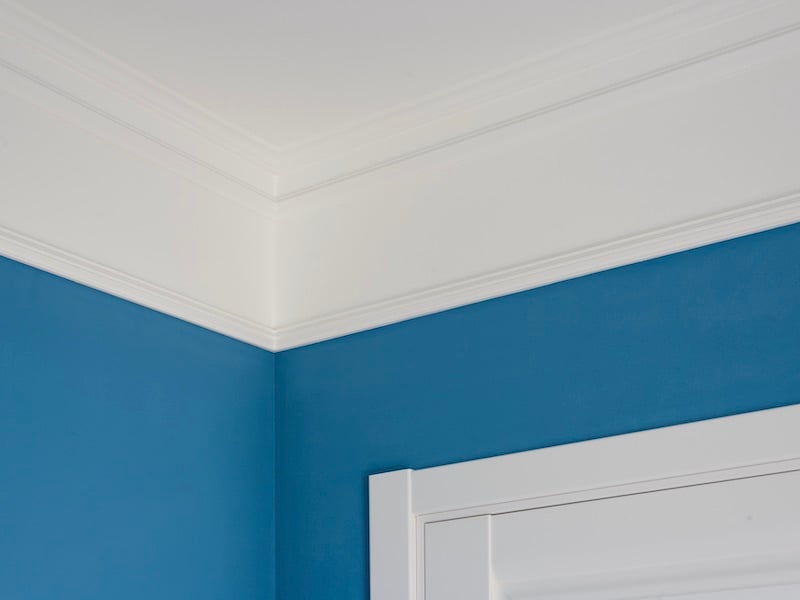
5. High-Gloss Paint Finish
High-gloss is the shiniest, most durable, and easiest to clean of all paint finishes. It is light reflecting and will give richness to a surface and make it pop. Use this finish to highlight architectural details, trim, and doors on the inside and outside of your home. A high- gloss finish will magnify every imperfection and flaw, so make sure proper prep and priming is done to the surface where it will be applied.

Testing Paint Colors
Before you tackle your painting project, you need to test the colors you are considering for the interior or exterior of your home. There are several ways to ensure that the colors you choose are the right ones.
1. Virtual Testing, Stick-On Swatches, and Color Chips
Some paint manufacturers allow you to upload photos to their websites to virtually test different colors. Others offer large, stick-on swatches that can easily be removed after you see which colors you prefer. You can also order small color chips online or pick them up in a store.
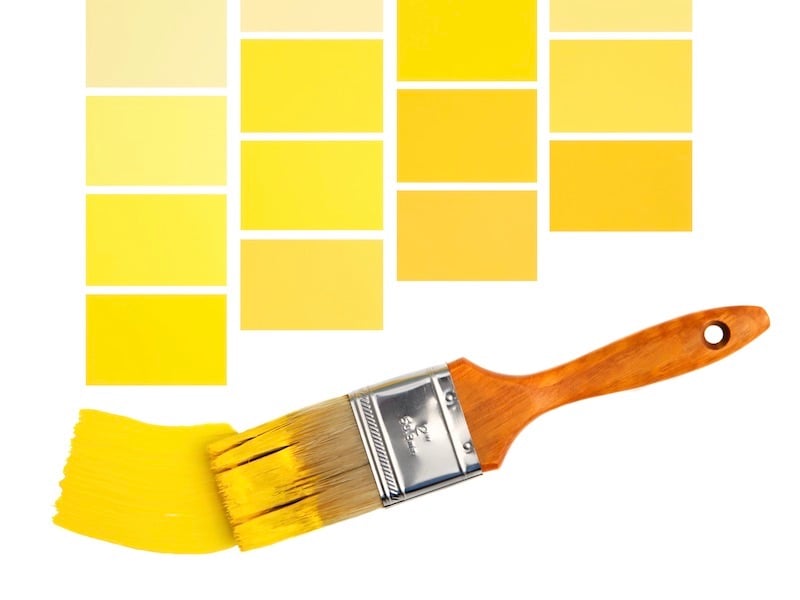
2. Buy Paint Samples
For the most accurate testing, buy small, sample-sized cans of paint in the 3-5 colors that you are considering. If you are not sure which finish will look best, get each paint color in different finishes. Remember, changing the finish can completely alter the way a paint color looks. Apply the colors directly to the surface that will be painted or to sample boards. Look at the paint at various times of day to see how the appearance changes. Be sure to check out the paint color in artificial light as well as natural light.
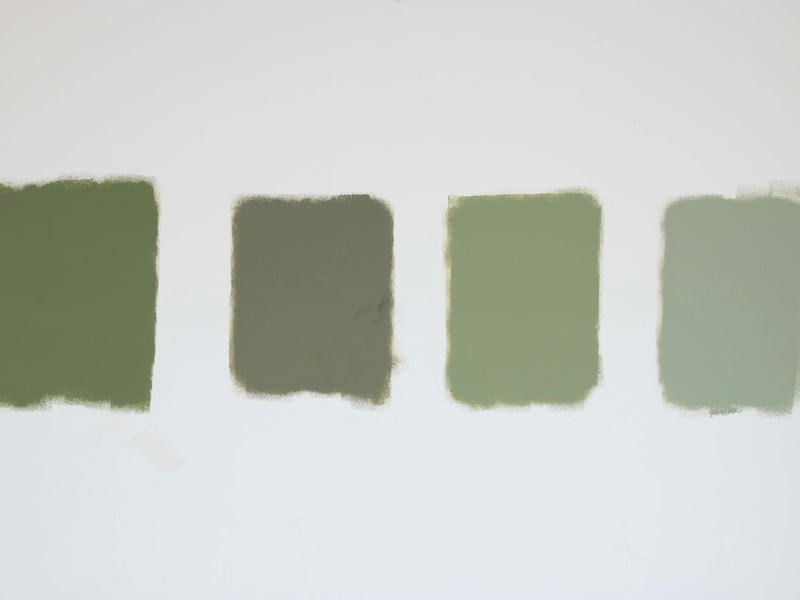
Properly Preparing Surfaces For Painting
Once you’ve decided upon the colors you like, it’s time to prep before applying any paint. Fix holes, sand rough spots, and make sure that the surfaces you will be painting are even and smooth.
Primer is often used to cover imperfections and flaws. It also allows the paint to adhere better and will help to conceal brush or roller strokes after the paint is applied. There are three basic types of primer. Choose the one that works best on the surface you are painting and with the type of paint you will be using.
1. Oil-Based Primer
Oil-based primer can be applied to a wide variety of surfaces such as wood (painted or unpainted), metal, and drywall. It is a versatile type of primer because it can be used on the interior or exterior of a home, and with enamel, acrylic, oil-based, or water-based paints. Oil based primer seals porous surfaces, prevents peeling and cracking, and stops old paint and stains from showing through the new paint. However, it is important to note that oil-based primer is not effective on masonry.
There are two big drawbacks to using oil-based primer. The first is that it emits high amounts of VOCs which can be harmful to people and the environment, so be sure to have good ventilation while working with this type of primer. The second is that it requires the use of harsh thinners and solvents to clean brushes and other painting equipment.
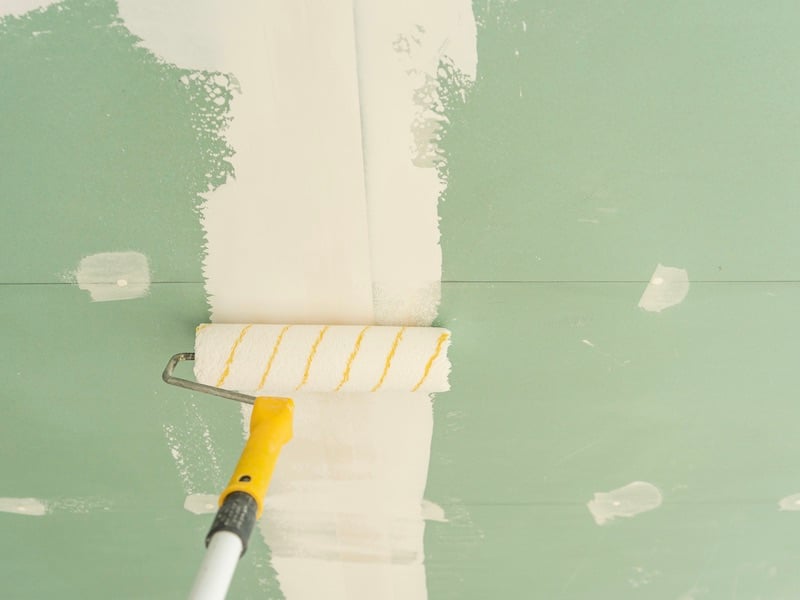
2. Water-Based Primer
Water-based or latex primer can be used to even out surfaces on drywall, bare soft-woods, brick, concrete, and galvanized metal. This type of primer dries quickly and works well under latex and acrylic paint. Water-based primers cover minor discolorations but do not cover dark stains as well as oil-based primers.
Since they are available in low- or no-VOC formulations, water-based primers are a healthier alternative to oil-based and shellac primers. It is easy to clean off painting supplies after using water-based primers since they are water-soluble.
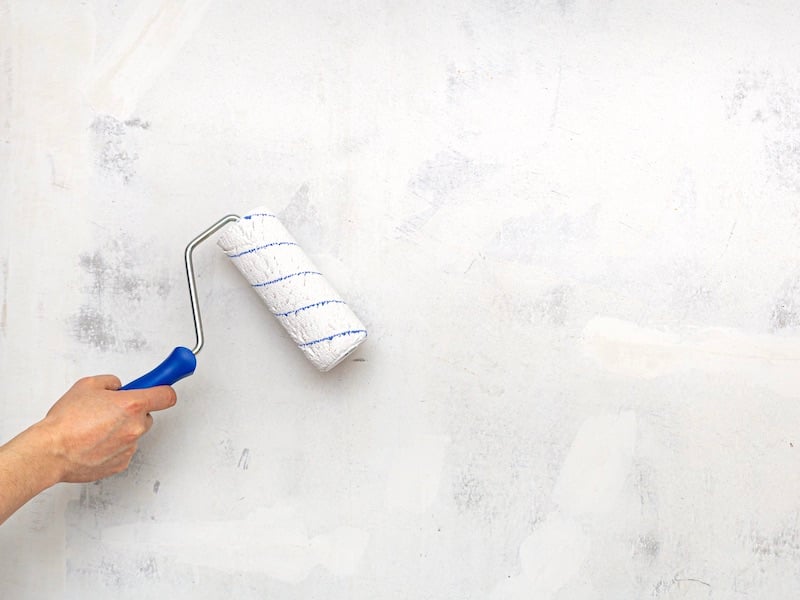
3. Shellac Primer
Shellac primers are the best at covering water and smoke damage and other types of heavy-duty stains on walls and other surfaces. They also seal in strong odors and prevent wood tannins from bleeding through new paint. Shellac primers work well on many materials such as wood, metal, plaster, and plastic because they dry quickly and are highly adhesive. They can be used underneath oil- and water-based paints.
Shellac primers can only be used on the interior of a home because they soften in high temperatures. Since they emit strong VOCs, be sure to have adequate ventilation while using this type of primer. You must use denatured alcohol or ammoniated detergent to clean brushes and other painting equipment after using a shellac primer.
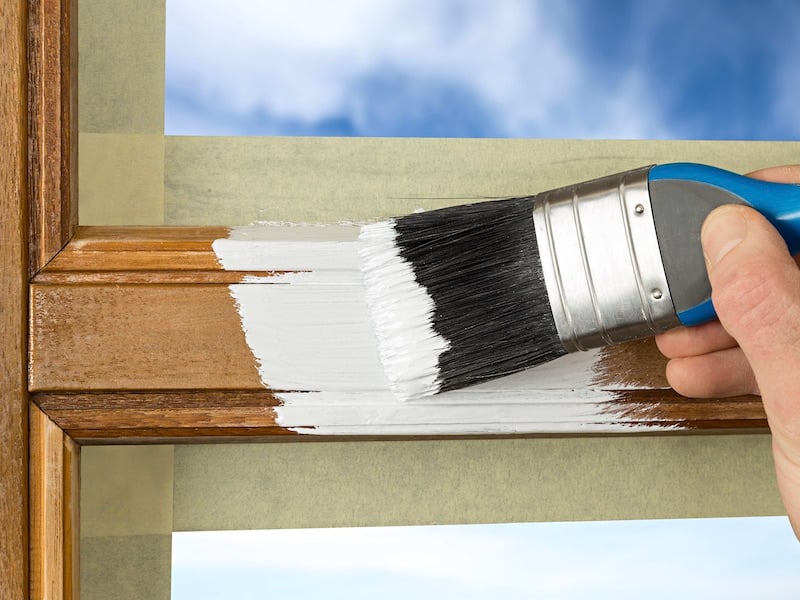
At Meridian Homes, we specialize in luxury remodeling and custom home building in the Washington, DC area. Our mission is to create exceptional residences that exceed expectations. Our highly personalized design process and careful management of every project have earned us a reputation over many years for outstanding client service and solid, beautiful craftsmanship. Contact us today to begin your custom home or remodeling project.




